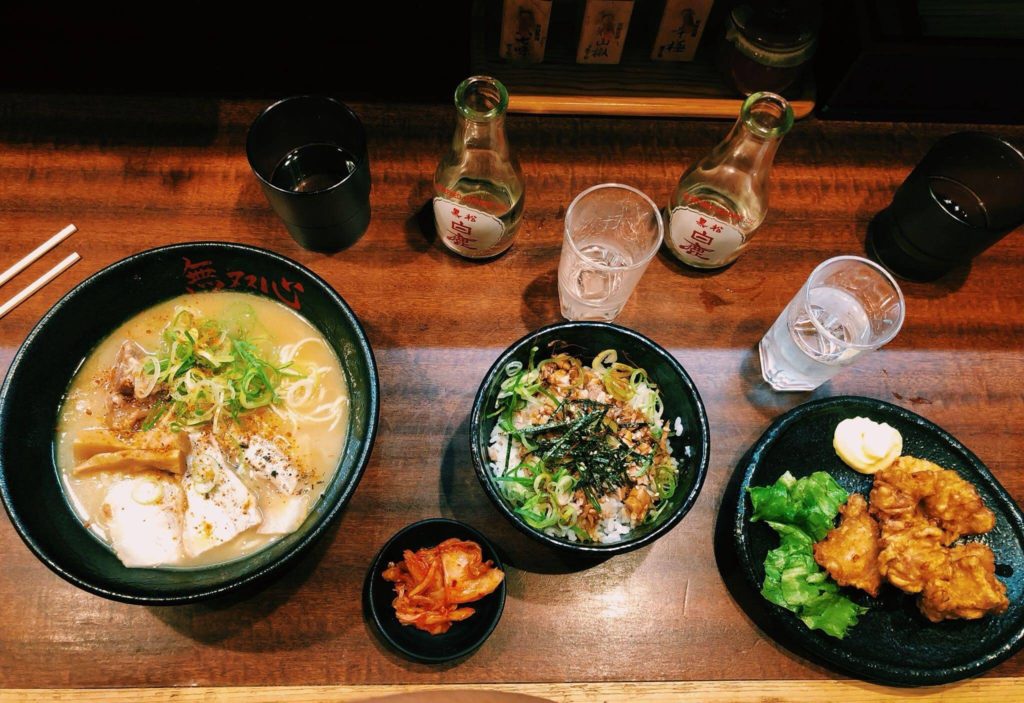Mein Food Staples: Everything Udon’t Know About the Pho-nominal Noodle

photo by Rachel Prokupek
Across the world, in every cuisine, there’s a core element that stands out, becomes almost a representative for the entire culture: the food staple. The common, the not-so-common and the utterly unheard of. And what better place to start then the staple whose origins are debated across continents: NOODLES!
Let’s break it down. What are noodles? For me, any boiled dough is in the arena. This includes anything from Asian noodles to Italian pasta. For the clarity of argument, let’s put aside stuffed pasta ‘cause that is swimming dangerously close to the territory of dumplings (an entire debate of its own).
According to the National Geographic, noodles date back 4,000 years to China, which marks the chronological origins of this international favourite. (Sorry Italians… we still love your pasta though.) Unlike pastas which are served cut, Chinese noodles are usually served uncut and long to exemplify a long, hearty life. That said, the types of noodles that exist in the modern Asian repertoire are as varied as people themselves. No article in the world could cover all these types of noodles but overall, and in very generalised fashion, we can categorize them into these broad categories:
- Wheat noodles – the closest cousin to Italian pasta, these noodles include lo mein and chow mein, which rely on the gluten in the dough to get a springy quality. They can be further subdivided by inclusion or exclusion of eggs.
- Rice noodles – because it’s made out of rice flour and cut (thick for pad thai or thinly for pho), these are great at absorbing the flavour of the sauce or broth.
- Glass noodles – the least internationally circulated, these noodles use potato or tapioca starch to develop a chewy noodle. Its unique texture and look are common in Vietnamese spring rolls or Korean japchae
And as we expand out from these Chinese origins, wonderful variations start to appear. In Central Asia, we get to see amazing hand-pulled noodles called lagman. In Japan, we can devour ramen which introduces an alkali quality to the noodles that creates that springiness. We can even go as far as Germany for spaetzle, which presses the wet dough straight into boiling water for a more eccentric-looking noodles.

As we survey the spectrum of noodles that exist, there are a few curious oddities begin to appear. In England, many Asian restaurants will sell Singaporean Noodles, which as a Singaporean I find quasi-insulting. The breadth of noodles that can be found in Singapore could never be fathomably incorporated into one dish. Looking through various Singapore Noodles recipes online, here are some things I found in common amongst the recipes:
- Vermicelli noodles
- Vegetables
- Shrimp
- Moderate spice
At this juncture, I have to admit: ingredients-wise, there’s not a lot that’s different from the noodles that you’d get in any Singaporean hawker centre. (Minus the spice of course — the entire country loves anything spicy.) Beyond that, the key difference is in the sauce that coats the slurpy noodles. But in the use of the vermicelli noodles and the pairing of veggies with seafood, the closest authentic version would be Mee Siam. The key difference, however, is that while the Britified version calls for the use of soy sauce as the major driver, the authentic Mee Siam will use tauco, which is a fermented paste made from yellow soybeans. Even though both add a certain salty depth to the dish, the flavour profile is completely different.
Overall, this is just proof that noodles as a staple has traversed the world and gained new identities in new homelands. To adopt a colloquial saying used in Singapore, it’s “same same but different.”